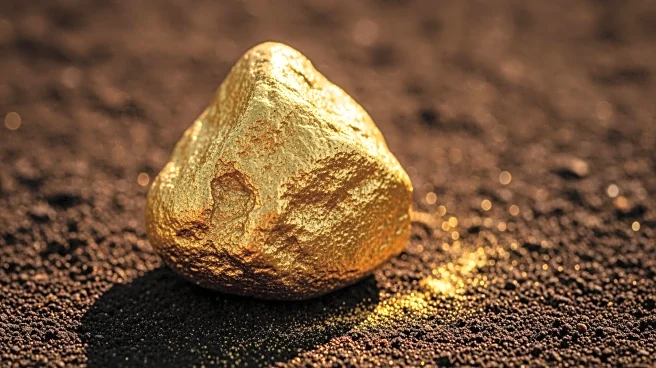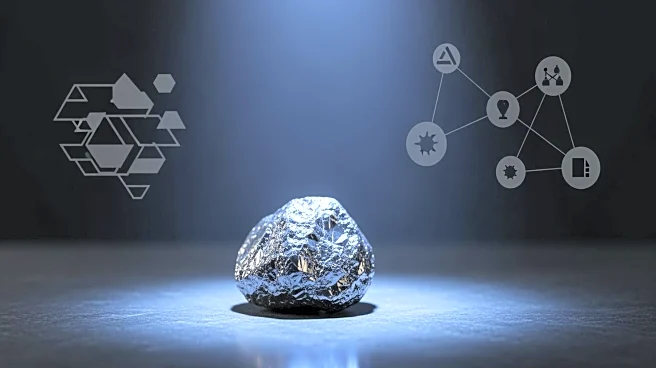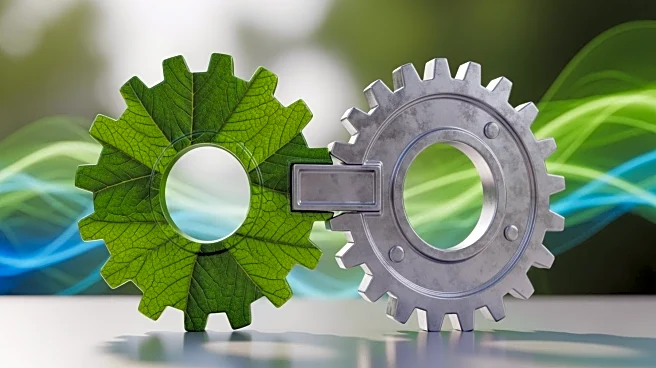What's Happening?
The restart of a Chinese lithium mine, operated by Contemporary Amperex Technology (CATL), has sparked significant reactions in global battery material markets. The mine, located in Jiangxi Province, represents
about 3% of global lithium production capacity. Its operations were halted in August 2025, with plans to resume in December 2025. This restart is part of a strategic move by CATL to maintain control over its supply chain, reducing dependency on third-party suppliers and mitigating supply chain volatility. The announcement of the restart led to a 9% decline in lithium prices on the Guangzhou Futures Exchange, highlighting the market's sensitivity to supply-side changes. The restart is aligned with regulatory compliance cycles in China, which dictate operational timing through environmental reassessment processes. This development underscores the strategic importance of vertical integration in the battery manufacturing sector, allowing companies like CATL to synchronize mining operations with production schedules, thereby optimizing inventory management.
Why It's Important?
The restart of the Chinese lithium mine is significant for several reasons. It highlights the strategic advantage of vertical integration in the battery manufacturing industry, where control over raw material supply can lead to cost savings and reduced market volatility. This move by CATL could pressure independent lithium producers, particularly in Australia, as they face increased competition from integrated Chinese operations. The market's reaction, with a notable drop in lithium prices, reflects the forward-looking nature of commodity markets, where expectations of future supply influence current pricing. This development also emphasizes the role of regulatory frameworks in shaping operational strategies, as companies must navigate compliance cycles to align production with market demands. The broader impact on the global lithium market includes potential shifts in competitive dynamics, with integrated players potentially gaining a stronger foothold.
What's Next?
Looking ahead, the successful restart of the mine in December 2025 could lead to moderate price pressures in the lithium market as additional supply becomes available. However, sustained demand growth from the battery manufacturing sector may absorb this supply without significant disruption. Independent producers may need to explore strategic responses, such as cost leadership or quality differentiation, to maintain competitiveness. Additionally, the regulatory environment in China will continue to play a crucial role in determining the timing and scale of mining operations. Companies may also consider expanding their geographic diversification to mitigate political and regulatory risks. The evolving landscape of the lithium market will require stakeholders to adapt to changing supply dynamics and competitive pressures.
Beyond the Headlines
The restart of the Chinese lithium mine also raises questions about the long-term sustainability of supply chain strategies in the battery manufacturing industry. As companies like CATL pursue vertical integration, there is a growing need to balance operational efficiency with environmental considerations. The regulatory compliance cycles in China, while providing predictability, also highlight the importance of adhering to environmental standards. This development may prompt other countries to reassess their regulatory frameworks to attract investment in lithium production. Furthermore, the interconnected nature of global lithium markets means that changes in one region can have ripple effects worldwide, influencing investment strategies and competitive positioning.












